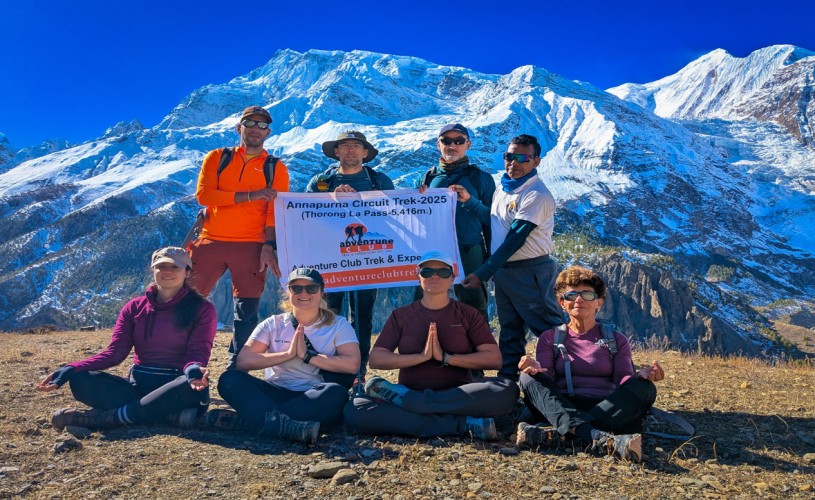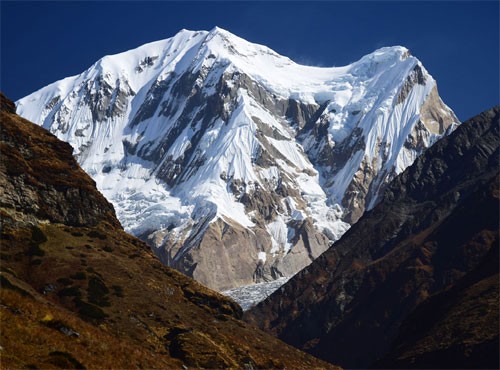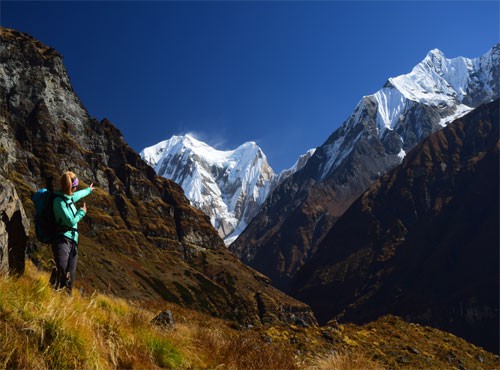Annapurna Circuit Short Trekking 12 Days Overview
The Annapurna Circuit Short Trek offers trekkers an unforgettable experience in the Himalayas. The main attraction of this trek is the most spectacular views of the Annapurna range. Silver mountains with glistening sunlight falling on them are a sight of extraordinary beauty. The Annapurna region is a magical place where travelers can explore natural landmarks.
Annapurna, in the western Himalayas, has consistently been voted the best trekking destination. The region is crowned by its lush vegetation and wildlife. Mustang's barren landscapes are also part of the area's unique terrains. The region is also home to a rich cultural heritage, including Tibetan monasteries, Hindu temples, and other local settlements. The Gurungs make up the majority of the ethnic groups. Thakali, Magars, and Magars follow.
From Kathmandu, our 12-day Annapurna journey takes you on a driving tour to beautiful settlements. The highway travels through various highway settlements before arriving at Chame. You will then trek to Upper Pisang and then Manang. Manang's landscapes are different from those of the lower region. You will then be led to Yak Kharka by the Marshyangdi Valley Trail.
You will be led to Muktinath, a religious landmark. People of all faiths revere this temple. The temple has 108 stone taps, as well as kundas. The locals also believe that worshipping in the temples and dipping into the ponds can cleanse you of your past sins. You will then pass beautiful trails through the upper Kali Gandaki Valley. After a scenic drive, you'll arrive at Jomsom—the windiest place in Nepal.
You will then fly to Pokhara and finally to Kathmandu. The 12-day Annapurna Circuit Trek itinerary concludes in Kathmandu. Then you will travel to your destination. This trek is suitable for both beginners and experts. There are some challenging terrains that you will need to prepare for. One of the most sought-after treks is an exceptional trekking experience. All travelers will remember the journey through the foothills of the Himalayas. The beauty of this region is unmatched anywhere else in the world. Here is comprehensive and detailed information about the 12-day Annapurna Circuit Trek.
The Annapurna Circuit Short Trek (12 Days) is designed for trekkers passionate about hiking who can walk 5-6 hours daily. It's a great alternative to the 14-day Annapurna Circuit Trek, which circles with a day's rest and explores a little bit of Kathmandu and Lake City Pokhara after the trek. We can tailor your itinerary exactly to your needs. You can rest assured that you will receive top-notch customer service for a reasonable price. We wish you a memorable journey!
We also offer a range of alternative trekking options in the Annapurna region, carefully designed to suit different interests, time frames, and levels of physical fitness. For trekkers seeking a shorter and more relaxed experience, the Annapurna Base Camp Trek (12 days) or the Annapurna Circuit Shortest Trek (10 days) are excellent choices. Those looking for a more complete circuit with balanced acclimatization may prefer the Annapurna Circuit Trek (14 days), while adventurous trekkers wanting to include a spectacular high-altitude highlight can choose the Annapurna Circuit Trek with Tilicho Lake (16 days). Each itinerary can be adjusted to match individual preferences, ensuring a safe, comfortable, and rewarding Himalayan trekking experience.
How difficult is the Annapurna Circuit trek?
When talking about how hard a trekking route is in Nepal, we can't forget altitude sickness problems. Altitude sickness is a serious issue we cannot ignore when assessing the difficulty of a trekking route in Nepal. Most people can walk comfortably at sea level for a few hours, but it becomes unbearable once you reach 4,000 m. The time goes on forever when you are walking at 4,000 m (13,123 ft) or higher. This route circles the Annapurna mountain range and is the longest in the region. It is harder and takes longer than the Annapurna Base Camp trek. The reason is that hikers must walk across the 5,416 m (17,764 ft) high Thorong La Pass. The steep ascents, long distances, and lack of amenities make this trek difficult. The winter season is usually closed due to heavy snowfall on the trails. You must be physically fit to walk at least five to seven hours daily. This trek is suitable for beginners as long as they have trained themselves for at least three months beforehand. You can train your body for the Himalayas by cycling, swimming, doing acrobatics, and doing cardio exercises.
What is food on the Annapurna Circuit route like?
We can have real Nepali food and international cuisines like Tibetan, Continental, Italian, and Indian during our trek. We'll get breakfast and dinner from where we stay, and lunch will be given as we travel to the next stop. We'll have all our meals covered during the hike, but we'll only get breakfast in Kathmandu and Pokhara. There will also be welcome and farewell dinners.
What is accommodation during the trek like?
We will stay in 3-star hotels in Kathmandu, Pokhara, and the teahouses on the trek. All accommodation is on a twin-shared basis. On request, a single supplement is available at an additional cost. Adventure Club Trek can arrange rooms with attached bathrooms, but some teahouses only offer shared toilets and washing facilities. Single rooms are available in Kathmandu and Pokhara and in the trekking areas at lower altitudes. However, they may be hard to find at higher altitudes.
When is the best season to trek the Annapurna Circuit?
Spring and autumn are the best seasons to travel and trek in the area. These seasons are ideal for trekking because of the beautiful trails. The seasons have a stable, fine climate with little or no rain. For these reasons, many trekkers choose to finish their adventures in these Annapurna areas.
Spring: Trekking around the area is best done in spring, which runs from March to May. Due to the weather, the Annapurna Circuit Trek 12 Days is even more beautiful in the spring. This trek passes through some of the most difficult terrains. The spring season makes the rugged landscapes even more stunning. The wildflowers that bloom on the hills make the trek even more beautiful. The temperatures are not too hot or too cold. This trek is also good for this season because of the low precipitation.
Autumn: From September to November, the autumn season is the best time for hiking in this region. Trekking in the season offers many advantages, including moderate temperatures and clear skies. Trekkers can enjoy the beautiful scenery of the mountains and the sky. Many festivals also fall during this time, so the beautiful trails remain festive. This 12-day Annapurna Circuit Trek also includes cultural exploration.
Is There WiFi & Electricity in the Annapurna Region
During the trek, electricity is available at all the teahouses where you will spend the night. You can recharge your phones, laptops, or iPads from micro-hydropower and solar panels by paying a nominal charge. Regarding WiFi, there are no free hotspots along the trekking trail, so we do not encourage carrying your laptop. Some teahouses offer paid WiFi services hourly, but don’t expect high speed on the remote trails.







